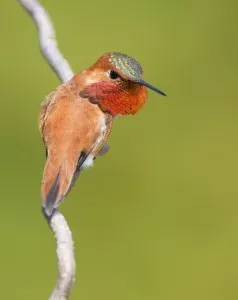Whether you’re a novice bird enthusiast or a seasoned feeder watcher, encountering a bully hummingbird is almost inevitable. These tiny birds pack a surprising punch with their aggressive tendencies, turning what should be a peaceful feeding session into a territorial showdown. If you’ve struggled to provide nectar without one dominant hummer chasing everyone away, you’re not alone—bully hummingbirds can ruin the experience. Fortunately, proven strategies exist to reduce this behavior and allow more birds to enjoy your hummingbird feeders, promoting harmony in your yard.
Why Do Hummingbirds Fight?
Understanding the root of bully hummingbird aggression is key to addressing it effectively. Like many animals, hummingbirds defend their territory fiercely, especially around food sources like feeders or during breeding season. A hummingbird claims an area and perceives newcomers as threats, triggering defensive responses to protect its resources.
Certain species, such as the Rufous Hummingbird, are notorious for their fiery tempers, with males often displaying stronger territorial instincts than females. This behavior peaks during migration or when nectar is scarce, as birds compete for vital energy.
Recognizing the signs of territorial aggression helps you intervene early. Bully hummingbirds escalate from subtle warnings to outright confrontations:
 territorial rufous hummingbird flare gorget
territorial rufous hummingbird flare gorget
- Aggressive noises: They start with loud, rapid chirps or buzzes to signal that the feeder is occupied.
- Body language: Posture changes make them appear larger—flaring gorgets, raising feathers, spreading tails, or wings to intimidate.
- Dives: Hovering above intruders before diving with a sharp chirp to scare them off.
- Chases: Persistent pursuits to drive rivals away from the feeder area.
- Physical fights: As a last resort, they use bills and talons, potentially causing injury or worse.
These displays begin mildly and intensify if ignored, all aimed at securing exclusive access to the feeder. Observing patterns, like repeated dives from a specific perch, reveals the bully’s strategy.
How to Stop Territorial Behavior
The outdated advice of spacing feeders far apart often backfires, creating multiple defensible territories for bullies. Instead, the most effective solution is to increase the number of feeders and cluster them closely in your yard. This overwhelms a single dominant bird’s ability to patrol everything, allowing subordinate hummers to feed undisturbed.
 ruby-throated hummingbirds fighting over feeder
ruby-throated hummingbirds fighting over feeder
Clusters create hidden feeding spots out of sight from each other, diluting territorial claims. The sounds of feeding and skirmishes naturally draw more hummingbirds, amplifying the effect. Renowned hummingbird bander and Alabama bird expert Bob Sargent recommends ramping up feeder numbers around July 4th, coinciding with nesting season’s end and southward migration waves.
Identify the bully’s vantage point—a nearby perch or branch—and disrupt it by pruning or removing it. This forces the aggressive bird to work harder, giving others a chance. Explore Perky-Pet® Top-Fill Hummingbird Feeders for easy maintenance in multi-feeder setups.
Additional Hummingbird Feeding Tips
Multiple feeders demand vigilant upkeep to prevent disease and spoilage. Clean them weekly with a vinegar solution, and refresh nectar every 2-3 days in hot weather. Sargent advises partially filling new feeders until they empty quickly, signaling high traffic.
Attracting diverse hummers enhances your yard’s ecosystem—plant nectar-rich flowers like salvia or bee balm nearby. Avoid red dyes in nectar; use a simple 1:4 sugar-water ratio, boiled and cooled.
For ongoing insights, follow Perky-Pet® on Facebook or subscribe to our e-newsletter for birding stories and deals.
In summary, combating bully hummingbirds involves more feeders, strategic placement, and habitat tweaks rather than confrontation. These steps foster peaceful feeding, delighting you with flocks of vibrant visitors. Consult local birding groups or experts like Sargent for region-specific advice, and start clustering feeders today to transform your yard into a hummingbird haven. Share your success stories in the comments!
References
- Sargent, Bob. Hummingbird banding and migration expertise (Alabama Ornithological Society).
- Perky-Pet® Hummingbird Feeding Guidelines.
- Cornell Lab of Ornithology: Hummingbird Behavior Resources.
